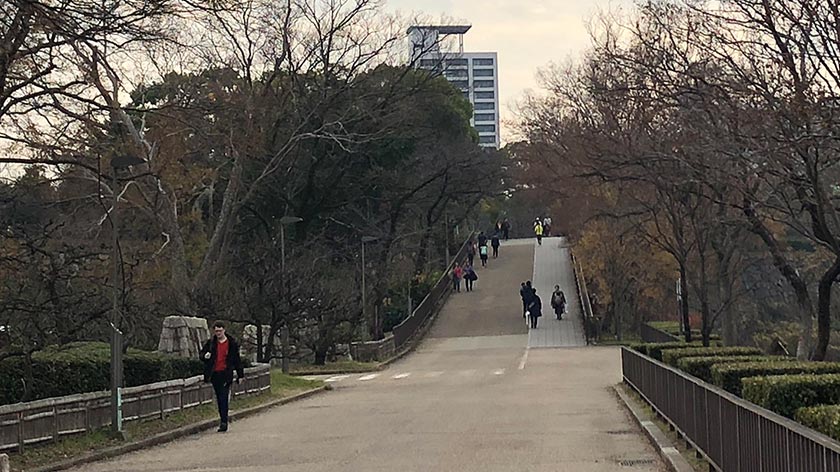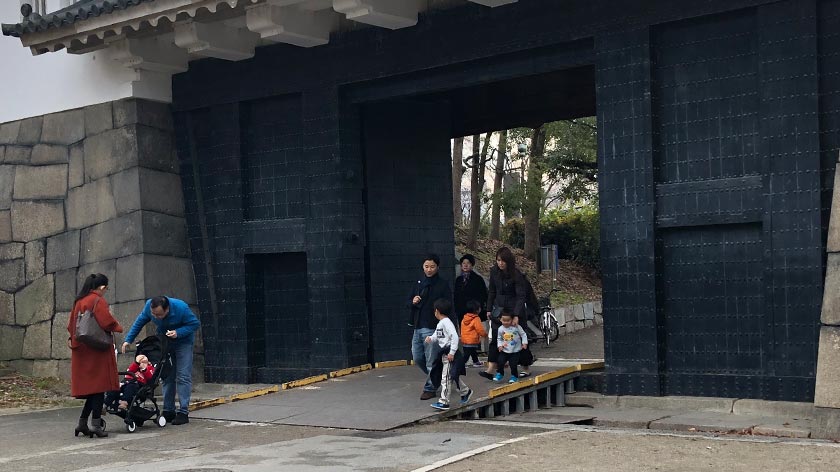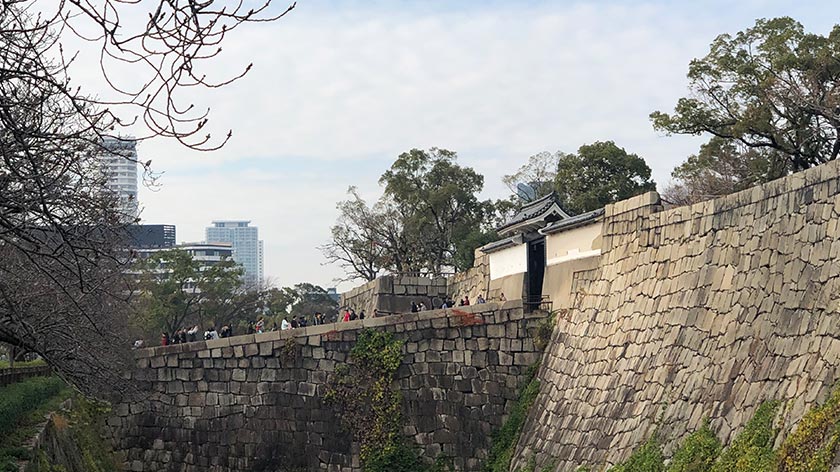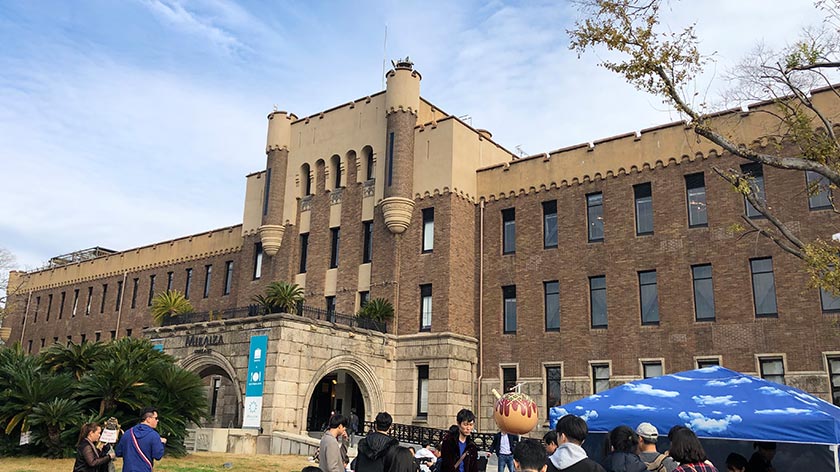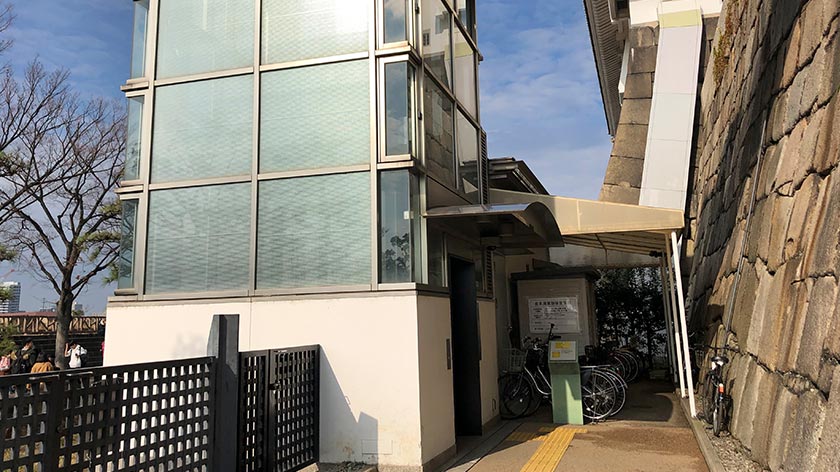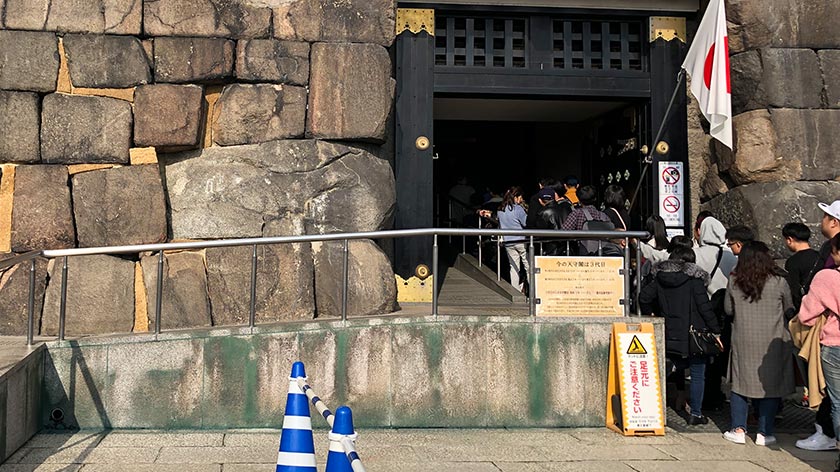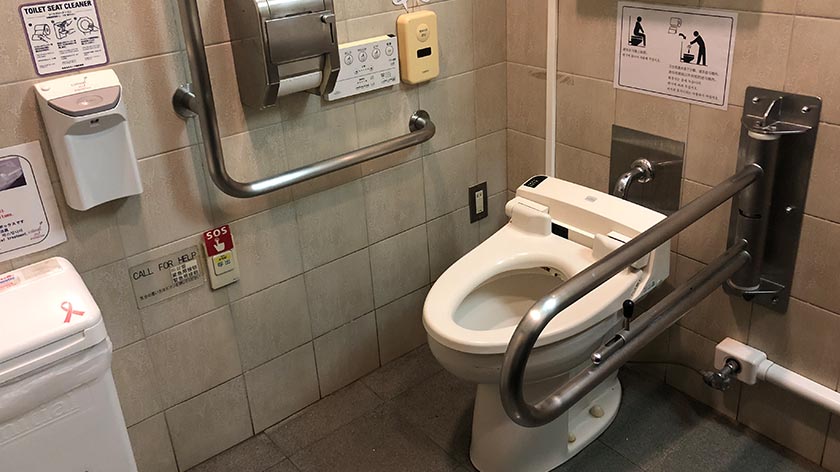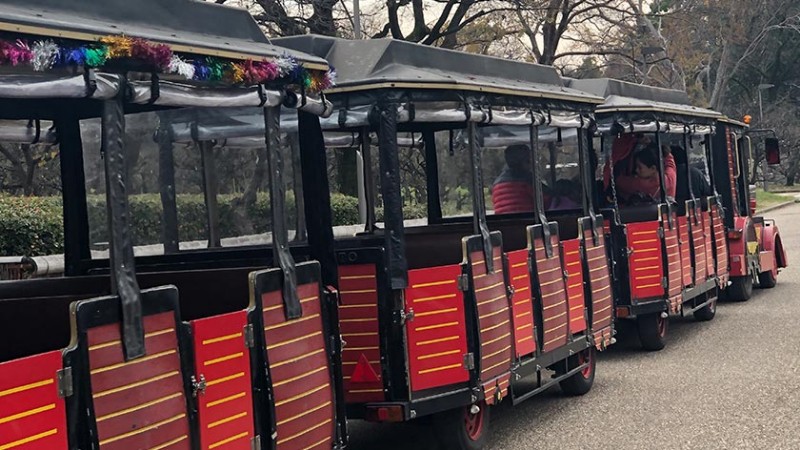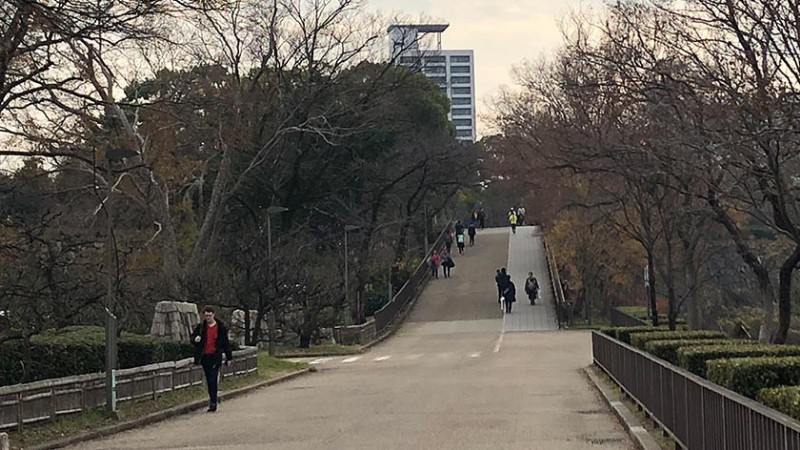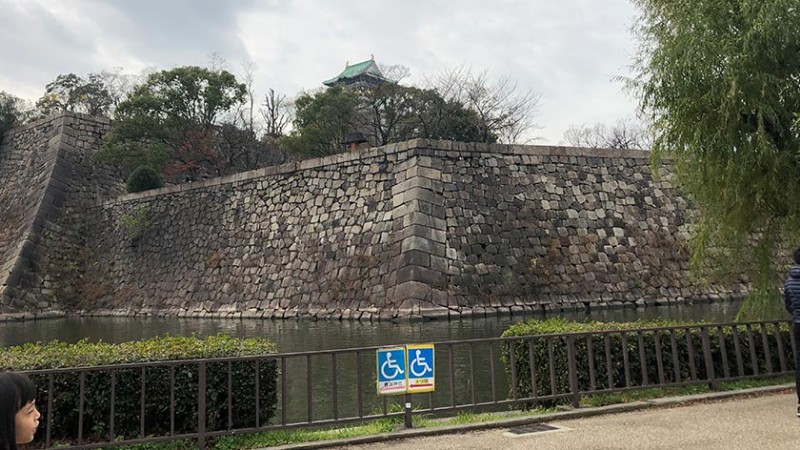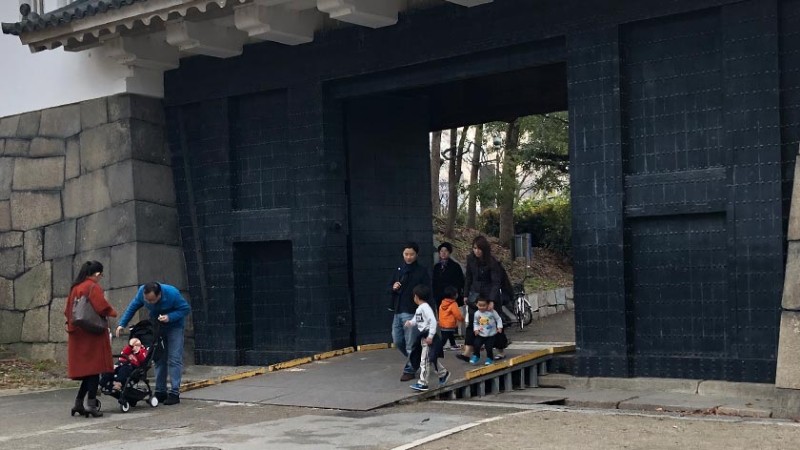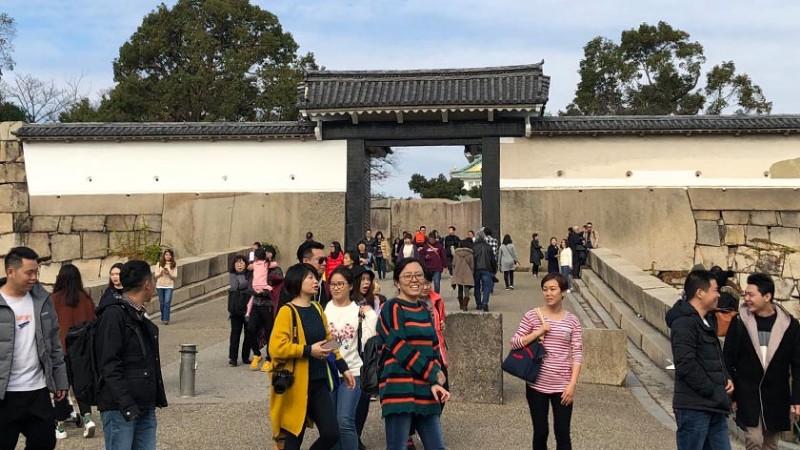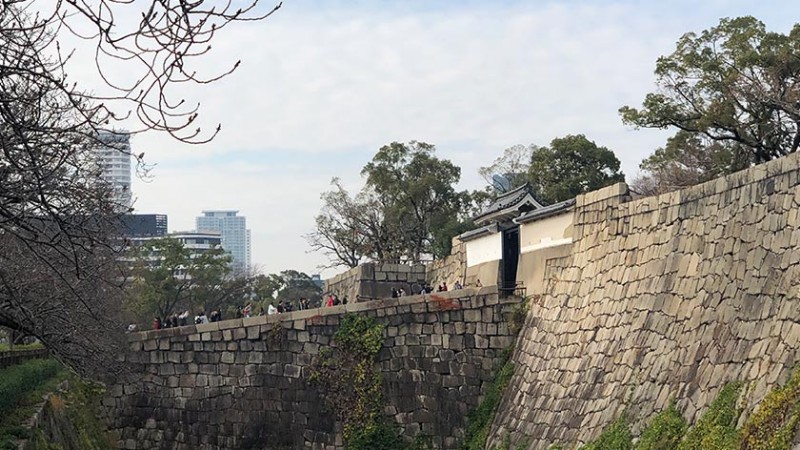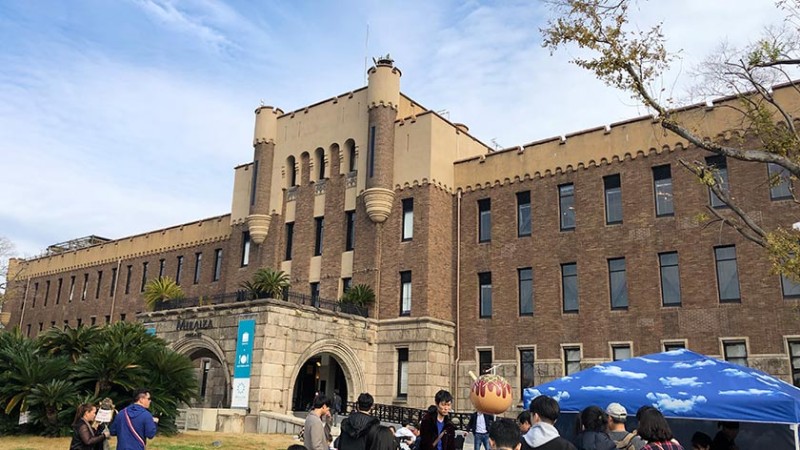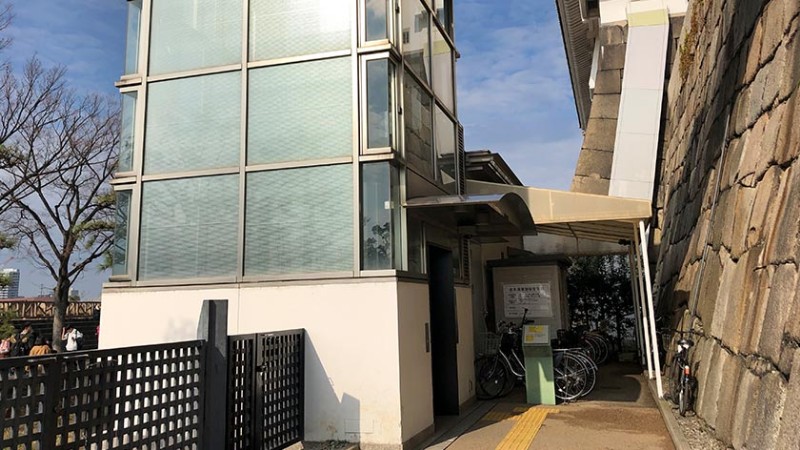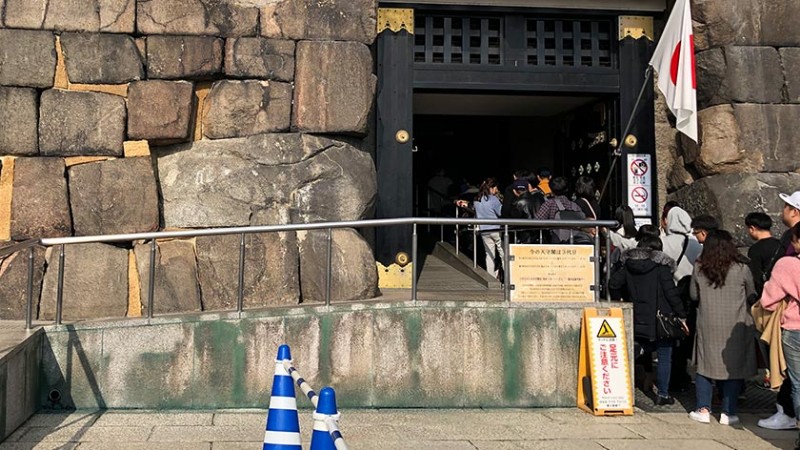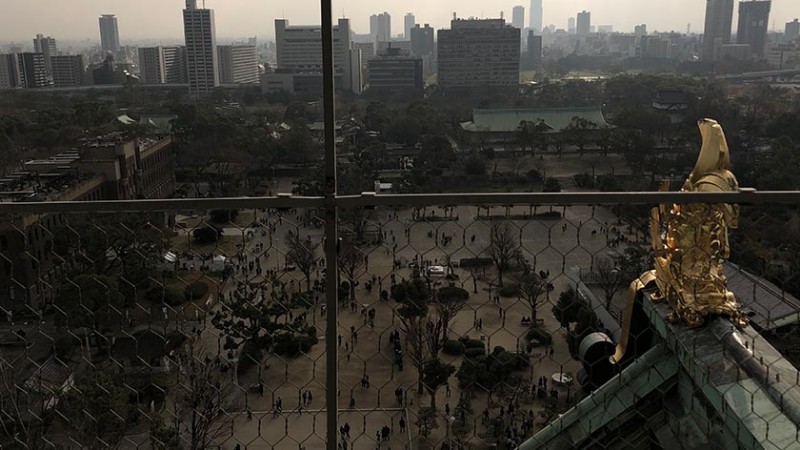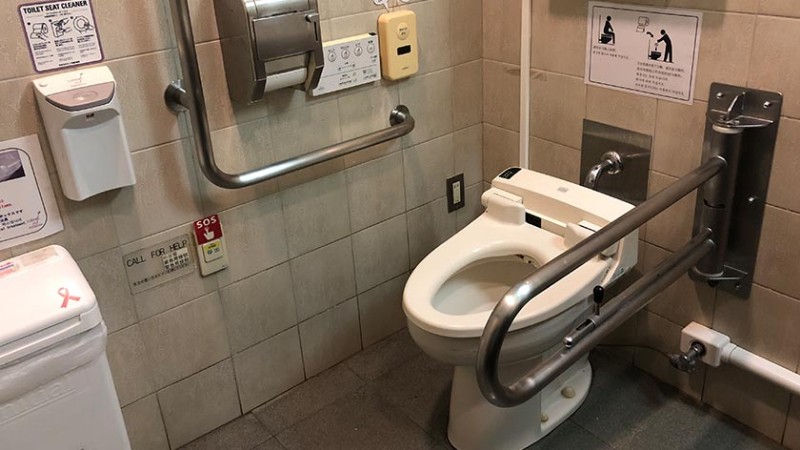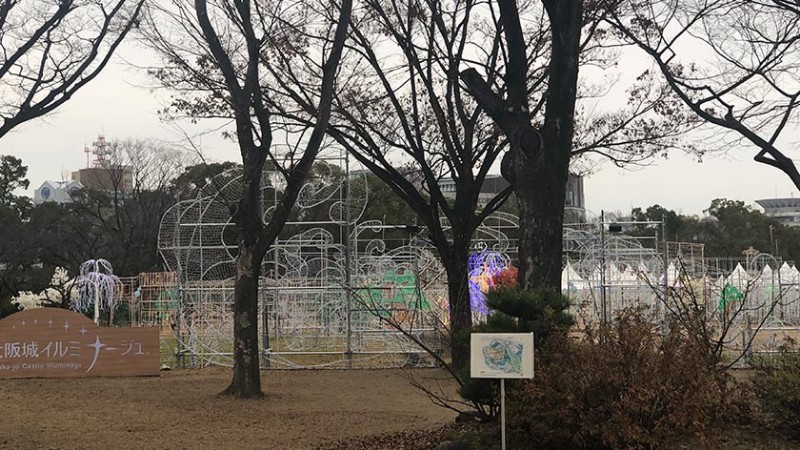- Overview

Osaka Castle is a popular attraction in Osaka with an fascinating history. The castle keep is wheelchair accessible, but slow walkers may find the distances a challenge.
Background Information
Osaka Castle is one of Japan’s most famous landmarks as it played a major role in the final days of the Sengoku Period. Modeled after Oda Nobunaga’s Azuchi Castle, Toyotomi Hideyoshi started construction of the castle in 1583 and by the time it was finished in 1597 it surpassed his predecessor’s castle in every way.
Toyotomi Hideyoshi died in 1598, one year after completion, and the castle passed to his son Toyotomi Hideyori. One of Hideyori’s regents created tensions with many of the generals and they ended up siding with the ambitious Tokugawa Ieyasu. A war was fought and after two sieges, Osaka castle and Toyotomi Hideyori fell to Tokugawa forces and the building was burnt down in 1615.
Tokugawa Hidetada began reconstructing the castle in 1620 and the walls stand to this day. The main keep was completed in 1630 and followed the original layout but burned down after being struck by lightning in 1665. Though repaired in the 1840s, most of the castle was again destroyed in the wars surrounding the Meiji Restoration.
During the Meiji Period Osaka Castle became part of the Osaka Army Arsenal and was used to manufacture modern military equipment and the castle keep was later remade of ferroconcrete in 1931. As a military arsenal, many of the buildings were destroyed by bombing in World War II, but the keep miraculously survived.
The current reconstruction started in 1995 and was completed two years later. The castle keep is made of concrete and houses a museum. The castle grounds, which cover approximately 60,000 square meters has 13 buildings that have been designated as important cultural assets by the Japanese government.
Within the grounds is the Nishinomaru Garden, a lawn garden with 600 cherry trees and a tea house but requires a separate entrance fee. The rest of the castle park has open green spaces and is free to the public. It is a popular place to see sakura cherry blossoms in the spring.
The entire Osaka Castle Park covers about two square kilometers with lots of green space, sport facilities, a multi-purpose arena (Osakajo Hall) and a shrine dedicated to Toyotomi Hideyoshi. The park is one of Osaka’s most popular hanami spot during the cherry blossom season, which usually takes place in early April.
The castle tower is open daily (excluding December 28 – January 1) from 9:00-17:00 for an entrance fee of 600 yen. There are occasionally extended visiting hours during holidays and special exhibitions, so be sure to check the official website.
Nishinomaru Garden is closed on Mondays (or following day if Monday is a national holiday) as well as the New Year holidays. Operating hours are 9:00 to 17:00 (or 16:30 November – February). During the cherry blossom season the garden is open until 21:00. Admission is 200 yen, but jumps to 350 yen during cherry blossom season.
Getting There
Osaka Castle can be reached from either Tanimachi 4-chrome Station along the Tanimachi Subway Line and Chuo Subway Line or Osakajokoen Station on the JR Loop Line. Both stations are wheelchair accessible.
Two small electric trolleys operate between the stations and the castle. The one serving Osakajokoen Station has a ramp for wheelchair users but can only handle up to 70kgs, so power wheelchair users will not be able to use it. The trolley going to Tanimachi 4-chrome Station does not have a wheelchair space.
Accessibility
The castle is fairly far from both stations, and those who have difficulty walking may prefer to use the trolley. Since the castle is a defensive structure, there are a number of hills on the way to the keep, adding to the difficulty for slow walkers and those using manual wheelchairs.

Ramps have been added to the gates.

The final bridge to the keep is a both a bit steep and rough.

One of the old army buildings has been converted and now houses restaurants and a few shops. There is an elevator and accessible toilet available.

An elevator has been installed on the outside of the castle to get up to the castle keep. After buying a ticket a staff member will guide you to the elevator as it is off-limits to other visitors.

Once at the top of the outer elevator, a guard will guide you inside the castle and to the elevator inside the keep.

The first stop is the top floor observation deck. One of the four exits to the balcony has no steps, so it is possible to go outside. Unfortunately, the walkway around the observation deck is very crowded and quite narrow (about 1.5m wide). While it is possible to go on the deck in a wheelchair, it certainly not a relaxing place to enjoy the view.
When getting off the elevator, the elevator operator will explain that to prevent the elevator from being used unnecessarily, and giving priority to visitors with mobility issues, you must press a call button behind a panel 3 times and the elevator operator will come to get you. You can use this system to move between floors in the museum
Places to rest are available in the museum and n accessible toilet is available on the 2nd floor.

The gardens are a mixture of accessible paths and a few that are not, but can be seen in a wheelchair. The tea house is not accessible.
Guide dogs are allowed in the castle.
Conclusion
Osaka Castle is a must-see if you are visiting Osaka. Even though the reconstruction was built before many of Japan’s accessibility laws, it is nice to see the effort that has been put in to ensure that the castle can be enjoyed by everyone. The biggest challenge will be for those who tire easily as there are not many places to rest.
- AccessPhone: +81-6-6941-3044
No Records Found
Sorry, no records were found. Please adjust your search criteria and try again.
Google Map Not Loaded
Sorry, unable to load Google Maps API.
- Photos
- Reviews
- Nearby Hotels
- Hotel the Lutheran is located in central Osaka and is only a 1-minute walk to Tanimachi Yonchome Station. Located above the Japan Evangelical Lutheran Church Osaka, the hotel is designed Read more...
- Accessible Room – B Type Toyoko Inn is a very reasonably priced hotel chain that has done an excellent job of making the majority of their hotels accessible to wheelchair Read more...
- Accessible Room – B Type Toyoko Inn is a very reasonably priced hotel chain that has done an excellent job of making the majority of their hotels accessible to wheelchair Read more...
Have a question?
We try our best to provide information to a wide audience. But everyone has different needs.
If you have some specific questions about this listing, come join us on Tabifolk in the Japan group and we will get you the information you need!
Share your pictures of your trip or look up the accessibility of your next location with SIM cards or pocket WiFi!

